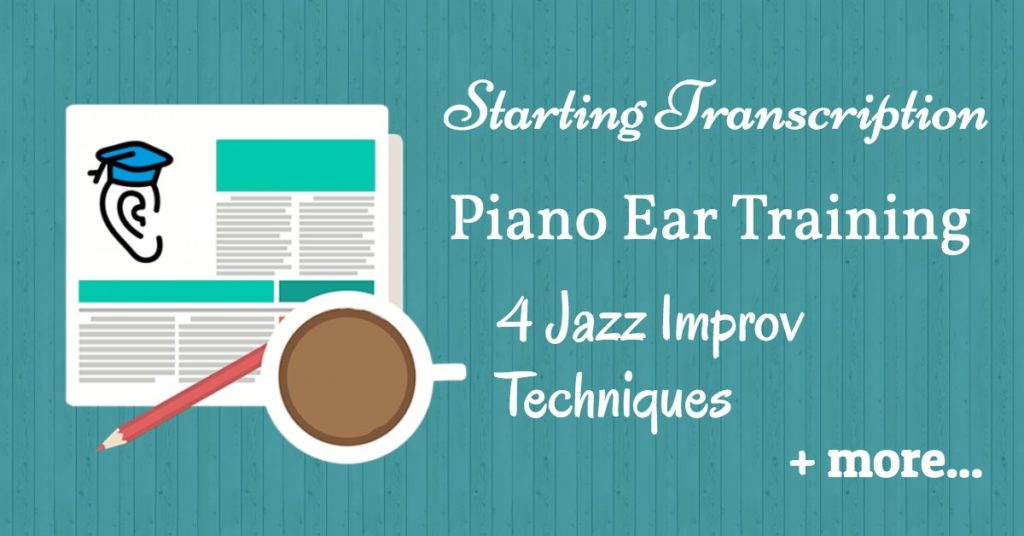Piano: often seen as a particularly difficult instrument to learn, or train your ears for. Improvisation: musicians find it overwhelming and hard. Transcription: generally seen as an intimidatingly advanced skill. And ensuring a live music performance is actually a success? That’s yet another traditionally-difficult task in music. Fortunately there are ways to make each of these things easy, and the new resources we have for you this week are going to reveal how!
Let’s dive right in, with an exciting interview we published, on the subject of ear training for piano. Don’t skip it just because you don’t play the keys though – there’s great insights here which can apply to any instrument…
Practical Ear Training for Piano
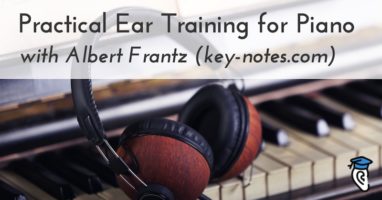 There are a lot of “learn piano online” websites and YouTube channels these days, but one which stands out is key-notes.com, run by Albert Frantz. He became a concert pianist after taking it up as an adult, and so his site specialises in helping adults learn to play piano. We’re particular fans because he puts such emphasis on the importance of ear training, so it was exciting to have the opportunity this week to interview him about his approach. Learn all about it in the interview Practical Ear Training for Piano.
There are a lot of “learn piano online” websites and YouTube channels these days, but one which stands out is key-notes.com, run by Albert Frantz. He became a concert pianist after taking it up as an adult, and so his site specialises in helping adults learn to play piano. We’re particular fans because he puts such emphasis on the importance of ear training, so it was exciting to have the opportunity this week to interview him about his approach. Learn all about it in the interview Practical Ear Training for Piano.
If Albert inspires you and you’re looking for ways to introduce ear training into your piano practice, first take a look at the key-notes blog. Then Lessons in Your Home have four piano ear training games you can try, PianoLessons.com covers the basics as well as some tips and tricks in this helpful video and Teach Piano Today offers thirteen tips for piano students to improve their ears.
How to Start Transcribing Music
Learning to transcribe music can be very intimidating, combining the detail of notation with the challenge of needing a well-trained ear. We’re launching a new series this week to help make it easy for you.
In the first part, How to Transcribe Music like a Pro: Before You Start, you’ll discover the best way to approach transcription and the best software to help you transcribe music. One of the recommended tools is Anytune, a sophisticated yet easy-to-use program for iPhone/iPad and Mac, and we’re excited to be running a special competition in partnership with Anytune, to tie in with this new transcription series. Enter for a chance to win the “Pro” version of the iOS app or a full version of the Mac software – wow! You can enter the contest via our Facebook page:
Want to boost your progress in transcribing? Guitar Lesson World has some excellent tips for transcribing music that you may not have considered and Paul the Trombonist (who has transcribed hundreds of pieces of music) offers you his four tips for learning to transcribe music in this video.
The world is going nuts for Pokémon Go this week, and so it seems only fitting to share this great Ongaku Concept video on transcribing the “Professor Oak” theme from Pokémon Red/Blue!
Four Must-Know Jazz Improv Techniques
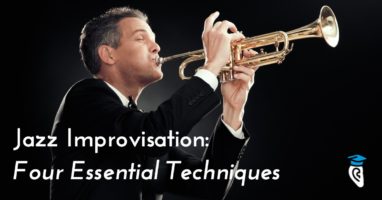 Whether or not you’re a jazz fan, if you are interested in improvisation you simply can’t avoid the close connection between improv and jazz. And whether or not you want to improvise jazz yourself or just enjoy listening to it, there are a number of techniques which are well worth knowing. Discover four essentials in Jazz Improvisation: Four Essential Techniques.
Whether or not you’re a jazz fan, if you are interested in improvisation you simply can’t avoid the close connection between improv and jazz. And whether or not you want to improvise jazz yourself or just enjoy listening to it, there are a number of techniques which are well worth knowing. Discover four essentials in Jazz Improvisation: Four Essential Techniques.
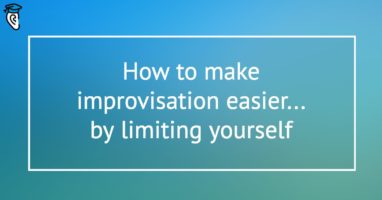 If you’ve been wanting to start improvising yourself but finding it a bit overwhelming, don’t worry! It turns out there’s a practical way to make improv easy – by limiting yourself. Sound strange? Find out how in this quick recap article: How to make improvisation easier by limiting yourself.
If you’ve been wanting to start improvising yourself but finding it a bit overwhelming, don’t worry! It turns out there’s a practical way to make improv easy – by limiting yourself. Sound strange? Find out how in this quick recap article: How to make improvisation easier by limiting yourself.
Don’t just take our word for it though! Rock and jazz saxophone player Bob Reynolds has this great exercise to show you how improvising with limits can be an effective way to practice without feeling overwhelmed, and Seattle-based jazz saxophonist Steve Treseler suggests the “two rule” approach as a way for self-imposed limitations to inspire greater freedom.
How to Plan a Successful Live Show
 We all wish it was enough to just rehearsal extensively and put on a great performance—but the reality is that a lot more goes into a successful live show than just the music! In the next part of their “Performing Live” series, the Musical U team share 6 steps you can take to help ensure your next show is a success.
We all wish it was enough to just rehearsal extensively and put on a great performance—but the reality is that a lot more goes into a successful live show than just the music! In the next part of their “Performing Live” series, the Musical U team share 6 steps you can take to help ensure your next show is a success.
Planning your gig can actually be fun and creative, as Onstage Success explains in this post on why it’s so important to prepare for your gig.
Once you’ve rehearsed and planned for that upcoming gig, how can you really be sure you’re ready to go? Jackie Indrisano for Sonicbids offers this comprehensive gig checklist and Guitar.com have a list of everything that should be going into your gig bag.
The Long and Wind-y Road
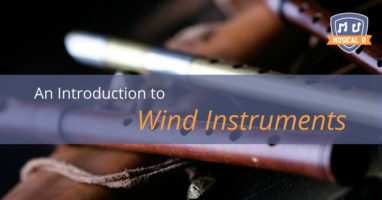 Did you know that Igor Stravinsky wrote a concert work in 1920 called Symphonies of Wind Instruments for an ensemble of woodwind and brass instruments? Have you ever wondered which instruments count as “wind instruments” or what makes wind instruments so distinctive? The Musical U team explore and explain in An Introduction to Wind Instruments.
Did you know that Igor Stravinsky wrote a concert work in 1920 called Symphonies of Wind Instruments for an ensemble of woodwind and brass instruments? Have you ever wondered which instruments count as “wind instruments” or what makes wind instruments so distinctive? The Musical U team explore and explain in An Introduction to Wind Instruments.
If you still have any difficulty telling brass and woodwind instruments apart after that, we’ve got you covered! The Vault has a helpful breakdown for you and Normans helpfully provide a comprehensive list of woodwind and brass instruments.
So what do you think? Are piano ear training, improv, transcription, and putting on a successful show starting to seem like they might be possible after all? I hope the resources above encourage you to start including them in your own musical life!

